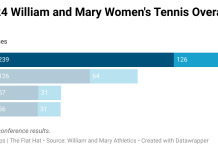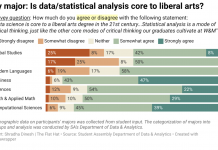With the new increases in tuition costs for students and the most recent clash between the Living Wage Coalition and College of William and Mary President Taylor Reveley, I am continually struck by one common problem: Students, including myself, are not nearly as informed as they should be regarding the finances of the College.
As students who pay to live, eat and go to classes here, we should definitely consider ourselves “customers” of the College. Therefore, it is our responsibility as consumers to be informed about what we are paying for and where our money is going. Regardless of your stance on what the College’s priorities should be when spending money and cutting costs, the point is that we must start by to learn about the current situation. It was made clear by the LWC’s confrontation with Reveley outside the Board of Visitors meeting that these distinctions are very unclear for many of us.
As Reveley pointed out, we all need to remember the College is state-owned. This prevents the College from increasing its revenue by admitting more out-of-state students. Also, there are many constraints concerning where money can and cannot be used, and specific parts of the budget are allocated for certain projects. LWC members have even admitted they do not know what money in the budget can be used to support their proposals. However, I am not writing this column to attack the LWC. Who among us hasn’t complained about the tuition increase, wondered why certain academic buildings get renovated while others don’t, or questioned why a new fraternity complex is now in the works? We are all guilty of wanting everything to be fixed and all aspects of this campus to be of exceedingly high quality, but we aren’t ready
to foot the bill for these changes.
The primary problem is that people tend to think very narrowly about the College’s financial issues. We have to understand the big picture: Even though we are paying a very large sum of money to attend this school, there are also a lot of costs associated with running it, many of which we probably don’t think of or notice on a day-to-day basis. Additionally, it is easy to find things to complain about, but we need to recognize money that goes toward the aspects of the College we love and enjoy. While everyone has their own personal opinion on the most important project to fund, the College must think of the campus as a whole, combining the various wants and needs of over 5,800 undergraduate students, not to mention the 2,000 graduate students.
Looking at the College’s budget constraints and stipulations would probably clear up many of the misconceptions students have about why money is used the way it is. That being said, this information is not always easily accessible, and when it is, students often ignore it. I wonder how many students in the undergraduate population actually read the entire e-mail Reveley sent regarding tuition increases. I know I am much more comfortable with an unpleasant decision if I at least know it is justified. Therefore, we as students need to work on informing ourselves so we can fully understand the situation before we rush to attack those making decisions.


































